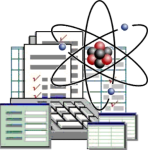2019-01-01 European Commission Keywords: natural background, atlas Under the Euratom Treaty, the European Commission (EC) is mandated to collect, verify and report information on radioactivity levels in the environment. In this context the Joint Research Centre (JRC) of the European Commission, as a part of its institutional support programme to DG Energy, operates and maintains the Radioactivity Environmental Monitoring database (REMdb), which contains the environmental radioactivity monitoring data provided by the European Union Member States on an annual basis. The REM database also serves as a historical data pool of radioactivity information related to the Chernobyl accident (26 April 1986). In 1998, the JRC published the Atlas on Caesium-137 Deposition on Europe after the Chernobyl Accident, which is still available on-line. All this information aims at monitoring artificial radioactivity, i.e. radioactivity introduced by man into the environment. However, natural ionising radiation is an important contributor to the exposure of members of the public. The human population is continuously exposed to ionising radiation from several natural sources that can be classified into two broad categories: high energy cosmic rays incident on the Earth’s atmosphere and releasing secondary radiation (cosmic contribution); and radioactive nuclides generated during the formation of the Earth and still present in the Earth’s crust (terrestrial contribution). The terrestrial contribution is mainly composed of the radionuclides of the uranium and thorium decay chains together with radioactive potassium. In most circumstances, radon, a noble gas produced in the radioactive decay of uranium, is the most important contributor to radiation exposure. To gain a clearer overview of the radioactive nature of the environment, the JRC embarked on the European Atlas of Natural Radiation. This Atlas aims to provide reference values and generate harmonised data for the scientific community and national competent authorities. At the same time, it should help the public to become familiar with the naturally radioactive environment. In this Atlas, the editors aim to present the current state of knowledge of natural radioactivity, by giving general background information, and describing its various sources. It is a compilation of contributions and reviews received from more than 100 experts in their field: they come from universities, research centres, national and European authorities, and international organisations. Atlas webpage.Mozilla Firefox 52.9 or above is required to download the file. |



